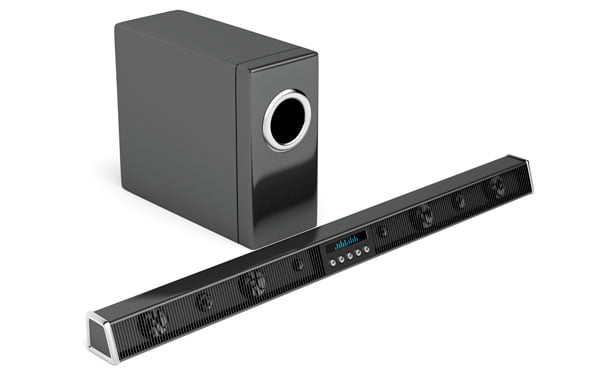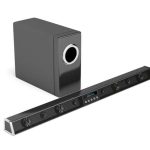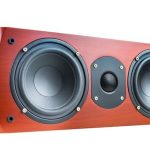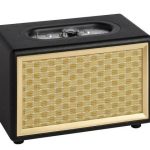A Center channel speaker is often confused with a passive soundbar. Both sound items receive an amplified speaker level, and they are positioned above or below your TV. However, they are not substitutes, and they have substantial differences. As such, you’ll need to differentiate between the two pieces of equipment to help you choose the most suited for your needs.
Passive soundbar Explained
A passive soundbar is designed to replicate an immersive sound experience of a multi-channel sound system in small to medium-sized rooms. Most passive soundbars are designed to receive sound signals from the left, right, and center channels, while some only receive from the left and right channels.
A passive soundbar, just as the title suggests, is a soundbar that is passive, meaning it doesn’t need an external source of power to amplify the sound signal. Rather, a passive soundbar uses an amplified speaker level signal. This is the reason why you cannot hook your passive soundbar to a TV directly.
This is the complete opposite of its active soundbar counterpart, which requires an external source of power source for it to amplify the sound signal. Also, an active soundbar has an inbuilt amplifier/receiver, and it can be hooked directly to your screen. This can be compared directly to a passive soundbar, which doesn’t include a built-in amplifier. All soundbars should be positioned directly above or below your television.
And just like most soundbars, passive soundbars have several speakers depending on the number of channels within them. This means that they can provide both stereo sound, and they may or may not offer surround sound using surrounding speakers that bounce sound off of the ceiling. Each passive soundbar has connections for each channel that requires to be connected to an amplifier or your receiver.
Center channel speaker Explained
A center channel speaker is a center speaker in a speaker set that is used to provide a specific anchor location for both dialogue and vocals. Ideally, a center channel speaker is a part of three (or even five, or seven, etc.) speakers in a home theatre sound system. And just like in a passive soundbar, the center speaker needs to be connected to an amplifier or receiver connected to your screen.
In most surround sound setups, a center channel speaker is placed directly above or below your television. This arrangement has the effect of directing the sound towards the listening area, but it can be positioned in a variety of ways to maximize its performance. In addition, the center channel speaker should be placed about the same height as other speakers, ideally at the listener’s ear level when seated.
Also, the speakers connected to the center channel should be placed behind or in the center of your TV to give the impression that sounds produced by the center channel are coming from the screen. Also, you can adjust the volume level of a center channel speaker independently of other speakers.
Center speakers often come as part of a speaker set, but you can get a one independently to make a customized home theater sound system. Also, it can act as a standalone speaker with a monophonic sound, blending all of the speakers’ channels together.
Differences between a Passive Soundbar and Center Channel Speaker
The main difference between the center channel speaker and passive soundbar is that the center channel has only one channel, while the passive soundbar has three channels, i.e., right, left, and center. This implies that the center speaker will only play audio coming from the center channel, usually movie dialogue, and a bit of background sounds.
Passive soundbars, on the other hand, will play audio coming from both the front channels (left, right) and the center channel. This audio is typically more powerful and complex, and since a passive soundbar needs to produce more audio, it will have more speakers than a center channel speaker.
One of the greatest benefits of a passive soundbar over the center channel speaker is that a passive soundbar can replace the front right, left, and center channels in a home theatre system. This means it can be used to broadcast the right, left, and center channels using different speakers. This is not usually possible with a center channel speaker, and because the amplifier/receiver is separate, passive soundbars can process other speakers within the setup.
Also, it is safe to say that passive soundbars are one-in-all setup for your audio needs. Often, they are ready to use right from the box, and all you need is to plug to your receiver and play. You don’t need to find room for right, left, and center speakers around your home theatre room.
A center speaker, on the other hand, requires that you have other speakers (front left and right) as a component of your sound system. This may require that you do some rearranging within your home theatre space to position all speakers.
Center Channel Speaker vs. Passive Soundbar; which one is right for you?
Considering that you now know how a passive soundbar differs from a center channel speaker, you should be able to choose one that best suits your needs. If you are looking to have an authentic surround sound experience, then you will need to go for a sound system with a center channel speaker as a part of the setup.
Remember, a surround sound setup will require more equipment as well as extra space to position speakers throughout the room. If, however, you are looking to minimize the number of audio items in your setup, the passive soundbar is the way to go for a rich, multi-channel sound system.
Also Read: Can I Use a Soundbar as a Center Channel Speaker?
Conclusion
Ideally, there is no wrong choice. Your choice will mainly depend on your needs and what you consider more important. If a quick fix and convenience are what you are looking for, then you should get a passive soundbar. However, if you are after an immersive surround sound, then you should go for a center channel speaker for your multi-channel sound system. Whatever you choose for your sound system, you should know that you have more than one option.
Michael Evanchuk is a San Francisco-based sound engineer with 20 years’ experience installing, troubleshooting, and repairing commercial, automotive, and household sound equipment. Evanchuk owns an auto stereo center, where he offers highly competitive car audio installation and repair services. He has written dozens of articles on different sound engineering topics, all of which have been published in leading journals, blogs, and websites.






